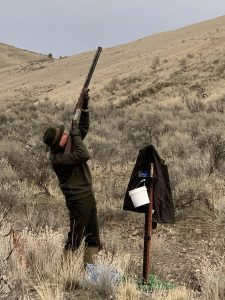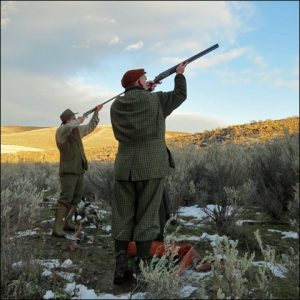Mastering the Art of Driven Bird Shooting
Driven bird shooting is a popular field sport in many parts of the world, offering both a thrilling challenge and an opportunity to enjoy nature. It involves birds being driven over a line of shooters by beaters. The birds, often pheasants or partridges, are then shot as they fly over, providing a test of skill, reflexes, and marksmanship. In this informative guide, we will walk you through the basics of driven bird shooting, the essential equipment needed, techniques for successful shooting, and the necessary safety measures to ensure a fun and safe experience.
Understanding the Basics of Driven Bird Shooting
Driven bird shooting is a traditional shooting sport that can trace its origins back to the 18th century. At its core, the sport revolves around a group of shooters, known as guns, standing in a line in the field while beaters drive the birds towards them. The driven bird shooting season typically starts in late summer and can extend until early spring, depending on the type of bird and local laws.

The typical game for driven bird shooting includes pheasants, partridges, and sometimes grouse. The objective is to shoot the birds as they fly overhead, and the challenge lies in the difficulty of hitting a moving target. The ultimate goal of the sport is not necessarily to harvest the most birds, but to enjoy the experience and the camaraderie that comes with it.
It’s essential to understand the etiquette and rules that govern driven bird shooting. This includes knowing when to shoot, respecting the quarry, and understanding the role of the beaters and pickers-up. As a shooter, it’s your responsibility to ensure that you only shoot birds within your designated area and that you’re aware of the beaters’ location at all times to ensure their safety.
Essential Equipment for Driven Bird Shooting
The most crucial piece of equipment for driven bird shooting is, of course, a shotgun. Typically, shooters use a 12-gauge shotgun, but 20-gauge can also be used. The choice depends on individual preference and comfort. Additionally, it’s important to choose proper ammunition. Shot sizes between 5 and 6 are commonly recommended for pheasants and partridges.
Besides the shotgun and ammunition, you’ll need ear protection to protect against the loud noise of the gunfire. Eye protection is also recommended. Appropriate clothing is essential, including a waterproof jacket and boots, as you can expect to be outside in various weather conditions. A shooting vest or belt to carry cartridges and harvested birds is also useful.

Finally, it is beneficial to have a dog trained for retrieving. They can help locate and retrieve the birds you’ve shot, making the process much smoother and more efficient. However, having a dog is not a necessity and many shooters participate without one.
Techniques for Successful Driven Bird Shooting
Successful driven bird shooting relies heavily on mastering the correct shooting technique. The first step is to position yourself correctly. Stand with your feet shoulder-width apart, with your front foot pointing towards where you intend to shoot. This stance will provide a stable base and allow you to swing the gun smoothly.
One of the most important skills in driven bird shooting is leading the target, also known as shooting ahead. This involves aiming the gun in front of the bird’s flight path, allowing the shot to meet the bird in the air. It requires practice to judge the correct lead, and it can vary based on the speed and angle of the bird’s flight.
Moreover, good marksmanship is a combination of patience, timing, and understanding the bird’s behavior. Always aim to shoot the bird when it is at the peak of its flight, providing the most ethical and clean shot. Also, learn to recognize when a bird is out of range or when it would be unsafe to shoot. Remember, the aim is not to shoot as many birds as possible, but to enjoy the experience and respect the game.

Safety Measures in Driven Bird Shooting
Safety is paramount in any shooting sport, and driven bird shooting is no exception. Always treat your gun as if it’s loaded, even when you’re sure it’s not. When not shooting, keep the gun’s breech open so that everyone can see it’s safe. Never point the gun at anything you wouldn’t want to shoot, and always ensure that the line of fire is clear before pulling the trigger.
Furthermore, it’s essential to be aware of what’s beyond your target. Be sure you have a clear view of the sky and that there are no obstructions or people in your line of fire. Also, respect your boundaries and only shoot birds within your designated shooting area.
Lastly, proper care and maintenance of your shotgun is critical to ensure its safe operation. Regular cleaning and checking for any signs of wear or damage can prevent mishaps. And always use the right ammunition for your gun and the game you are shooting.
Driven bird shooting is a sport steeped in tradition and camaraderie. Whether you’re a seasoned shooter or new to the field, understanding the basics, having the right equipment, mastering the techniques, and putting safety first can significantly enhance your shooting experience. Remember, the spirit of driven bird shooting doesn’t lie in the number of birds you manage to shoot, but in the joy of the experience, respect for nature, and the fellowship shared among participants in the field.
# # #


Comments